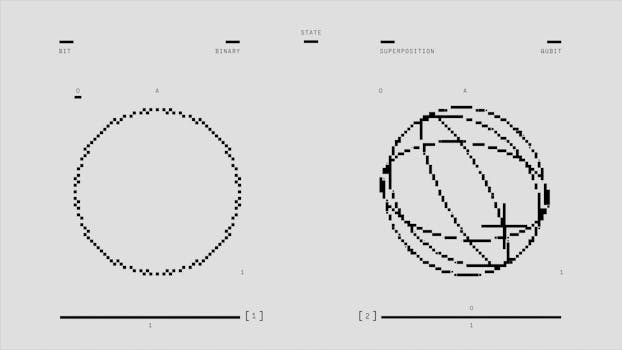
Introduction to Quantum Mechanics

Understanding quantum mechanics is essential for grasping the fundamental aspects of our universe. Quantum mechanics, a branch of physics, deals with phenomena at the atomic and subatomic levels, where the classical laws of physics no longer apply. It reveals a world that defies our everyday experiences and intuitions about reality.
The Principles of Quantum Mechanics

At the heart of quantum mechanics are several key principles that challenge our perception of reality. One of the most significant is the wave-particle duality, which posits that particles can exhibit properties of both waves and particles. This dual nature is illustrated by the famous double-slit experiment, where particles such as electrons create an interference pattern when not observed, suggesting they behave like waves. However, when observed, they act like discrete particles.
Another fundamental concept is superposition, which indicates that particles can exist in multiple states simultaneously until measured. This leads to the intriguing idea that reality is not fixed and can be influenced by observation, which raises profound questions about the nature of existence itself.
Quantum Entanglement

Quantum entanglement further complicates our understanding of reality. When two particles become entangled, the state of one particle is directly related to the state of another, regardless of the distance between them. This phenomenon, which Albert Einstein famously referred to as “spooky action at a distance,” suggests that information can be transferred instantaneously, challenging the conventional limits of communication and causality.
Implications for Reality

The implications of quantum mechanics extend beyond the realm of physics; they provoke philosophical inquiries about the nature of reality itself. If particles exist in a state of superposition and are influenced by observation, what does this mean for our understanding of consciousness? Does the observer play a crucial role in shaping reality? These questions have led to various interpretations of quantum mechanics, including the Copenhagen interpretation, many-worlds interpretation, and pilot-wave theory, each offering different perspectives on the relationship between observation and reality.
Conclusion

Understanding quantum mechanics offers a glimpse into the underlying fabric of reality, revealing a complex interplay between observation, measurement, and existence. As we delve deeper into this enigmatic field, we find that our reality is far more intricate than it appears. The exploration of quantum mechanics not only enhances our scientific knowledge but also enriches our philosophical perspectives on life and existence.






